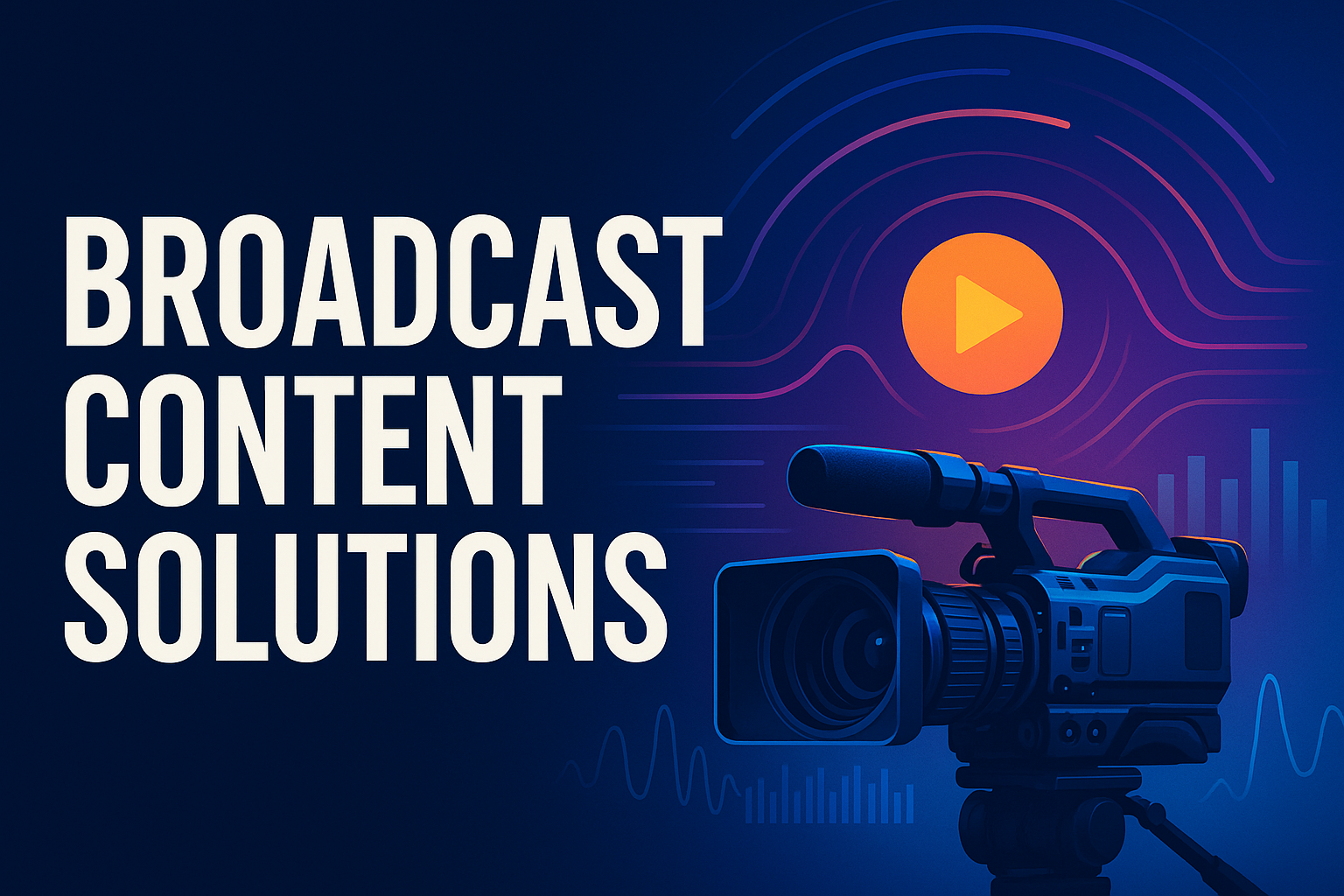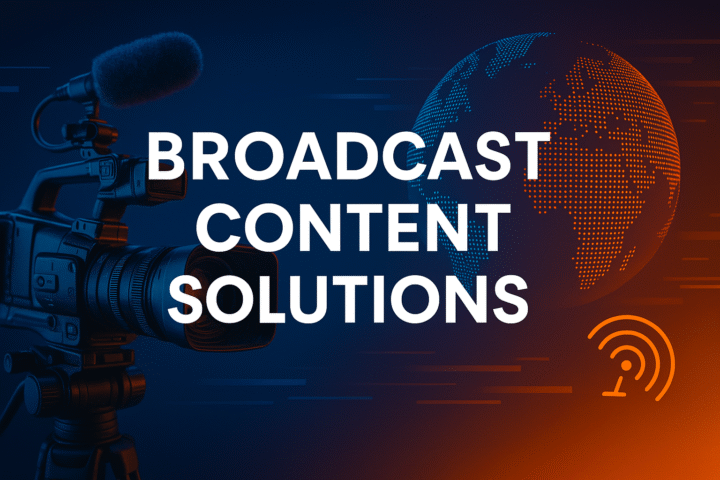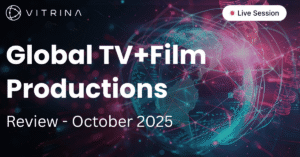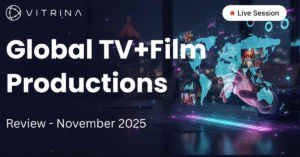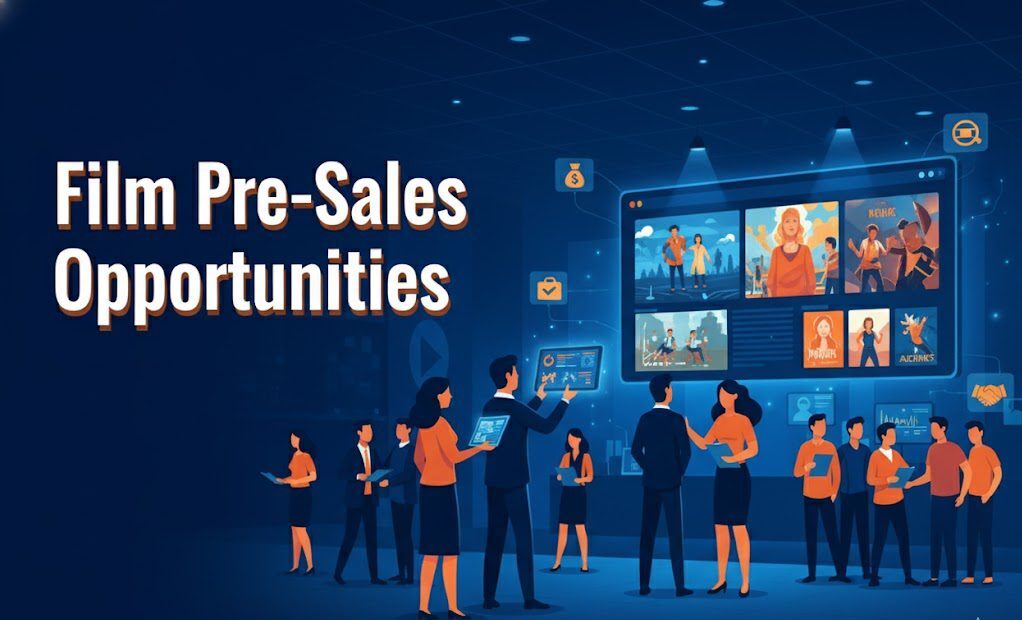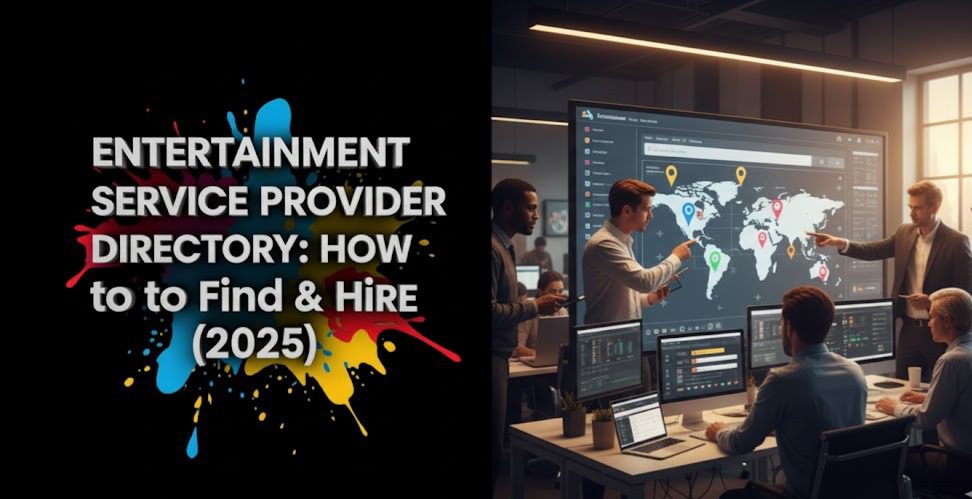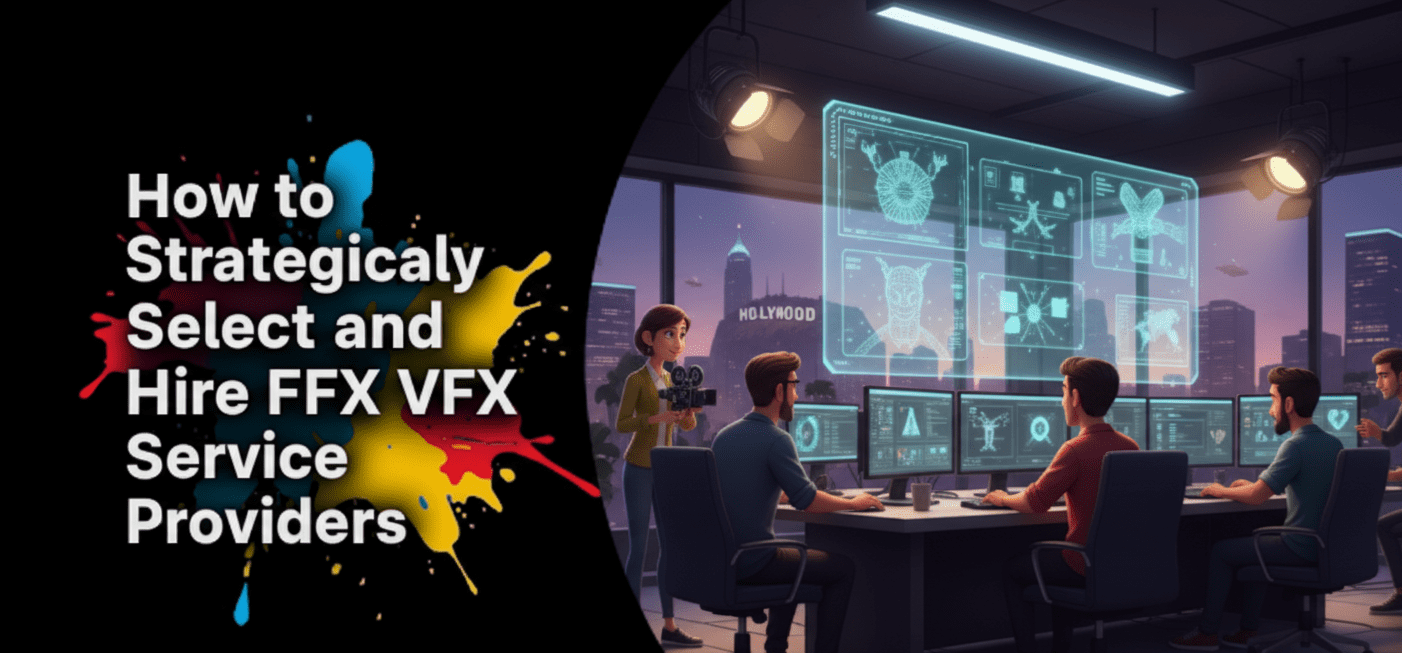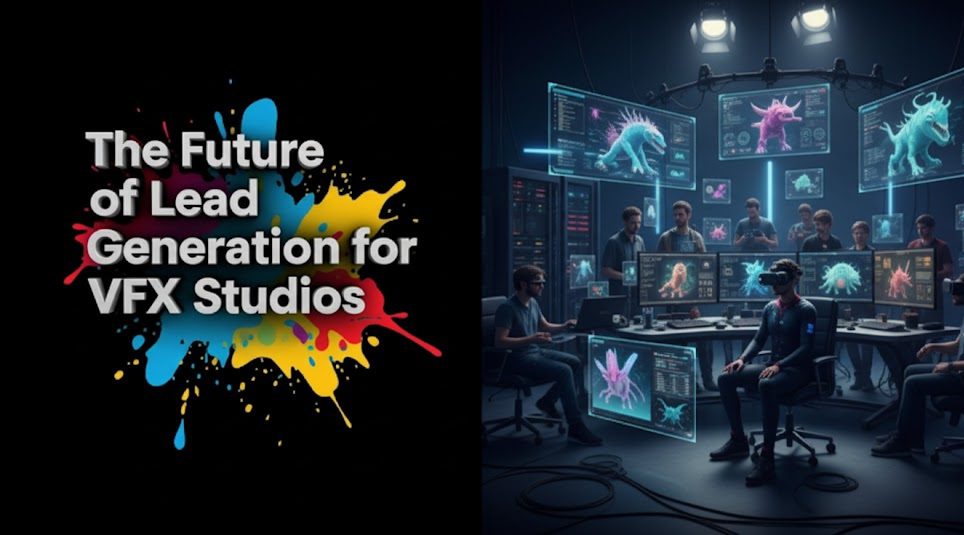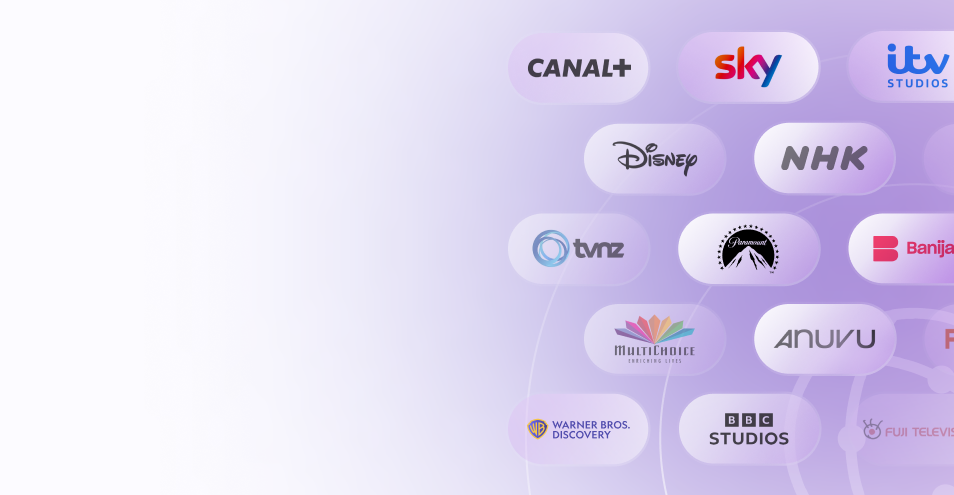Introduction
Welcome, broadcast professionals and media strategists! In an era of rapidly evolving media consumption, effective Broadcast content solutions are more critical than ever. While streaming gets a lot of headlines, traditional and modern broadcasting remains a powerful way to reach vast audiences.
This article will explore the essential components of today’s Broadcast content solutions, covering everything from content creation and management to playout and distribution across various platforms. We’ll look at how technology is shaping the future of broadcasting and how you can leverage these solutions to stay competitive and engage your viewers. Let’s tune in to the world of cutting-edge broadcast operations!
Key Takeaways
| Aspect | Description |
|---|---|
| Definition | Broadcast content solutions refer to the comprehensive set of technologies, workflows, and services used for creating, managing, distributing, and monetizing content for television, radio, and increasingly, digital broadcast channels. |
| Core Objective | To enable efficient, reliable, and high-quality delivery of programmed content to a wide audience across various broadcast mediums. |
| Key Elements | Content acquisition/production, media asset management (MAM), playout automation, master control, transmission (satellite, terrestrial, IP), and audience analytics. |
| Modern Challenges | Transition to IP-based workflows, multi-platform delivery (linear and digital), managing diverse content formats, and integrating with OTT services. |
| Future Drivers | Cloud-based broadcasting, AI in content operations, advanced advertising solutions, and the need for data-driven programming insights, potentially complemented by market data from services like Vitrina. |
Optimizing Your Programming with Data?

Core Components of Modern Broadcast Content Solutions
To deliver compelling content reliably and efficiently, modern broadcasters rely on a suite of interconnected Broadcast content solutions. These components cover the entire workflow, from content creation to the final transmission. Understanding these building blocks is key to appreciating how today’s broadcast operations function.
Content Creation and Acquisition Systems for broadcasting.
This is where the journey of broadcast content begins. Solutions in this area include:
- Studio Production Systems: Cameras, switchers, graphics generators, audio mixers, and lighting for in-studio shows (news, talk shows, etc.).
- Field Production Equipment: Portable cameras, microphones, and recording gear for creating content outside the studio (ENG – Electronic News Gathering, EFP – Electronic Field Production).
- Post-Production Tools: Editing software, color correction tools, audio sweetening, and visual effects software to refine raw footage into finished programs.
- Content Acquisition Networks: Systems for receiving content feeds from external sources, like news agencies (e.g., Associated Press, Reuters), sports events, or syndicated program providers.
Modern Broadcast content solutions emphasize high-quality (HD, 4K) production and efficient workflows to get content ready for air quickly.
Media Asset Management (MAM) and Playout Automation.
Once content is created or acquired, it needs to be managed and scheduled for broadcast:
- Media Asset Management (MAM): These systems are sophisticated databases that store, catalog, and manage all media files (video, audio, images, graphics) along with their metadata (descriptions, rights information, usage history). MAMs enable quick search and retrieval, automate workflows (like transcoding for different platforms), and help manage content rights. For broadcasters looking to acquire content, understanding what’s available for licensing via platforms such as Vitrina’s Project Tracker can feed into their MAM strategy.
- Playout Automation: This is the heart of a broadcast station’s on-air operations. Playout systems automatically play out scheduled programs, commercials, promos, and graphics according to a pre-set playlist. They ensure seamless transitions, manage ad breaks, and can run 24/7 with minimal human intervention. Modern systems are often software-based and can control multiple channels.
Together, MAM and playout automation are crucial Broadcast content solutions for ensuring operational efficiency and accuracy.
Master Control, Traffic, and Billing Systems.
These components handle the final checks, ad scheduling, and financial aspects of broadcasting:
- Master Control Room (MCR): The final point before content goes on air. MCR operators monitor outgoing signals for quality, ensure correct program and ad playout, handle emergency alerts, and manage live CUEs. While largely automated, MCR still requires skilled oversight.
- Traffic Systems: These are specialized software systems used to schedule advertisements (commercials) and other non-program content (like promos or public service announcements). Traffic systems manage ad inventory, ensure ads are placed correctly according to sales contracts (avoiding conflicts, ensuring rotations), and generate logs for playout and billing.
- Billing Systems: Integrated with traffic systems, these solutions handle the invoicing for ad placements and reconciliation of what was scheduled versus what actually aired, ensuring accurate billing to advertisers.
These Broadcast content solutions are essential for the business side of broadcasting, particularly for commercial stations relying on advertising revenue.
| Core Component | Primary Function | Benefit to Broadcaster |
|---|---|---|
| Studio Production Systems | Create high-quality live and recorded content. | Enables compelling original programming. |
| Media Asset Management (MAM) | Organize, store, and retrieve all media assets and metadata. | Improves workflow efficiency and content reuse. |
| Playout Automation | Automate the on-air schedule of programs and ads. | Reduces errors, ensures 24/7 operation. |
| Traffic & Billing Systems | Manage ad scheduling, inventory, and invoicing. | Maximizes ad revenue and ensures accurate financial tracking. |
| Master Control | Final quality check and oversight of on-air signal. | Maintains broadcast quality and compliance. |
Innovations Shaping Broadcast Content Solutions
The broadcast industry isn’t standing still. Exciting innovations are continually reshaping Broadcast content solutions, making them more flexible, efficient, and capable of delivering richer experiences. These advancements are helping broadcasters adapt to new viewer expectations and competitive pressures.
The shift towards IP-based workflows and cloud broadcasting.
Two of the biggest shifts in Broadcast content solutions are the move to IP and the adoption of the cloud:
- IP-Based Workflows: Traditionally, broadcast facilities used specialized SDI (Serial Digital Interface) cables and hardware. The industry is rapidly moving towards IP (Internet Protocol) infrastructure, using standard IT networking technology. This offers greater flexibility, scalability, easier integration of new services, and potential cost savings by using off-the-shelf IT hardware. Standards like SMPTE ST 2110 are key to this transition.
- Cloud Broadcasting: Broadcasters are increasingly leveraging cloud computing for various functions, including content storage (MAM in the cloud), processing (transcoding, editing), playout, and even disaster recovery. Cloud solutions offer scalability on demand, reduced need for on-premise hardware, and the ability to manage operations remotely. This means a broadcaster could potentially launch a new channel or service much more quickly.
These trends are making Broadcast content solutions more agile and less reliant on expensive, proprietary hardware.
AI and Machine Learning in content management and delivery.
Artificial Intelligence (AI) and Machine Learning (ML) are bringing new levels of intelligence and automation to Broadcast content solutions:
- Automated Metadata Tagging: AI can analyze video and audio content to automatically generate descriptive metadata, identify objects, recognize faces, transcribe speech, and even detect sentiment. This significantly speeds up content cataloging and improves searchability in MAM systems.
- Content Moderation: AI tools can help flag potentially inappropriate content for review, aiding compliance.
- Personalized Content & Ad Insertion: While more common in digital, AI can help tailor content recommendations or even dynamically insert different ads for different audience segments in IP-delivered broadcast streams.
- Predictive Analytics: AI can analyze historical viewership data to predict program ratings, optimize scheduling, and even suggest content acquisitions.
- Automated Highlights Generation: For sports and news, AI can identify key moments and automatically create highlight reels.
AI is helping broadcasters work smarter, not just harder, across their operations.
Advanced advertising solutions and addressable TV.
Monetization is key, and Broadcast content solutions are evolving to offer more sophisticated advertising capabilities:
- Dynamic Ad Insertion (DAI): For IP-delivered broadcast streams (including those feeding OTT platforms), DAI allows different ads to be shown to different households or viewers watching the same program, making ads more relevant and valuable.
- Addressable TV Advertising: This takes DAI a step further, allowing advertisers to target specific household segments based on demographic, psychographic, or behavioral data, even in traditional broadcast environments via set-top box data.
- Programmatic Advertising: Automated buying and selling of ad inventory, making the process more efficient for both broadcasters and advertisers.
- Improved Measurement: Better tools to measure ad viewership and effectiveness across platforms, providing more accountability to advertisers.
These advancements are helping broadcasters compete more effectively with digital advertising platforms for ad revenue.
| Innovation | Impact on Broadcast Solutions | Example Application |
|---|---|---|
| IP-Based Infrastructure | Replaces traditional SDI with flexible network-based systems. | Using standard IT switches for video routing. |
| Cloud Playout | Enables remote, scalable channel origination. | Launching a pop-up channel for a special event from the cloud. |
| AI-Powered Metadata | Automates content tagging and description. | Automatically transcribing interviews for archival search. |
| Dynamic Ad Insertion (DAI) | Allows targeted ads in linear streams. | Showing different car ads to different neighborhoods. |
Choosing and Implementing the Right Broadcast Content Solutions
Selecting and integrating new Broadcast content solutions is a significant undertaking. It requires careful planning, consideration of your specific needs, and a clear understanding of how these solutions will impact your operations and bottom line. Getting it right can transform your capabilities.
Key considerations for selecting broadcast technology partners.
When evaluating vendors for Broadcast content solutions, consider the following:
- Reliability and Reputation: Broadcasting is a 24/7 operation; downtime is not an option. Choose partners with a proven track record of reliability and excellent support.
- Scalability and Future-Proofing: Will the solution meet your current needs and also scale to accommodate future growth and technological advancements (e.g., new formats, more channels)?
- Interoperability: How well does the solution integrate with your existing systems and with technologies from other vendors? Look for adherence to industry standards.
- Ease of Use and Training: Complex systems require well-trained staff. Consider the user interface and the training and support offered by the vendor.
- Total Cost of Ownership (TCO): Look beyond the initial purchase price. Consider ongoing maintenance, support costs, upgrade paths, and potential operational savings.
- Vendor Roadmap: Understand the vendor’s plans for future development. Are they investing in innovation and aligning with industry trends like IP and cloud?
Integrating new solutions with existing broadcast infrastructure.
Few broadcasters build an entire facility from scratch. More often, new Broadcast content solutions need to be integrated into an existing environment. This can be challenging:
- Legacy Systems: Older equipment might not be easily compatible with new IP-based or cloud-native solutions. Phased approaches or gateways might be needed.
- Workflow Disruption: Implementing new systems can disrupt established workflows. Careful planning, staff training, and change management are crucial.
- Data Migration: Moving large archives of content and metadata from an old MAM to a new one can be a complex and time-consuming process.
- Testing: Rigorous testing of new solutions in a sandbox environment before going live is essential to iron out any issues.
A well-thought-out integration plan, often developed in partnership with your chosen vendors, is key to a smooth transition.
The role of data analytics in optimizing broadcast operations and content strategy.
Modern Broadcast content solutions generate a wealth of data. Leveraging this data through analytics is crucial for optimization:
- Audience Analytics: Understanding who is watching what, when, and for how long helps inform programming decisions, ad sales strategies, and content acquisition. This can be augmented by external market data, such as content popularity trends from platforms like Vitrina.
- Operational Analytics: Monitoring the performance of broadcast systems (e.g., playout servers, transmission equipment) can help predict potential failures, optimize resource usage, and improve efficiency.
- Content Performance: Tracking how specific programs or ads perform can guide future content creation and ad placement strategies.
- Workflow Efficiency: Analyzing data from MAM and traffic systems can help identify bottlenecks and areas for improvement in content preparation and ad scheduling workflows.
Data-driven decision-making is becoming increasingly central to successful broadcasting, turning raw data into actionable insights.
| Selection Factor | Key Question for Vendor | Importance for Implementation |
|---|---|---|
| Reliability & Support | “What are your SLAs for support and uptime guarantees?” | Minimizes on-air disruptions. |
| Scalability | “How does your solution handle an increase in channels or content resolution?” | Ensures long-term viability. |
| Interoperability | “Which industry standards (e.g., SMPTE ST 2110, NDI) do you support?” | Facilitates integration with existing and future systems. |
| Training & Ease of Use | “What training programs do you offer for our staff?” | Reduces learning curve and operational errors. |
Staying Ahead in the Evolving Broadcast Landscape?

The Future of Broadcasting and Content Solutions
The broadcast industry is in a constant state of evolution, driven by technological innovation and changing viewer behaviors. The Broadcast content solutions of tomorrow will be even more intelligent, agile, and integrated, enabling broadcasters to navigate this dynamic landscape successfully.
Convergence of broadcast and OTT: Hybrid approaches.
The line between traditional broadcasting and Over-The-Top (OTT) streaming is blurring. The future points towards hybrid models where broadcasters leverage both:
- Simulcasting and Catch-Up Services: Linear broadcast channels are often simulcast online and offer on-demand catch-up versions of their programs via their own apps or websites.
- Integrated User Experience: Smart TVs and set-top boxes increasingly offer a unified interface where viewers can access both linear channels and streaming apps seamlessly.
- Shared Infrastructure: Content preparation and management systems (like MAMs) are being designed to serve both linear playout and digital VOD workflows from a common content pool.
- Cross-Platform Advertising: Solutions that allow advertisers to buy and measure campaigns that run across both linear broadcast and digital OTT platforms.
Future Broadcast content solutions will need to be inherently multi-platform, supporting these converged workflows natively.
Personalization and interactivity in future broadcast experiences.
While traditionally a one-to-many medium, broadcasting is finding ways to incorporate more personalization and interactivity, especially via IP delivery:
- Personalized Program Guides: EPGs that learn viewer preferences and highlight relevant upcoming content.
- Content Versioning: Delivering slightly different versions of content (e.g., with different language audio tracks or targeted local news inserts) to different audience segments.
- Interactive Elements via Companion Apps: Encouraging viewers to engage with polls, Q&As, or exclusive content on a second screen while watching a live broadcast.
- Addressable Advertising: As mentioned, delivering more relevant ads to specific households.
These features aim to make the broadcast experience more engaging and relevant to individual viewers, borrowing some of the appeal of digital platforms.
Sustainability and efficiency in broadcast operations.
There’s a growing focus on making broadcast operations more environmentally sustainable and economically efficient. Future Broadcast content solutions will contribute by:
- Cloud Adoption: Reducing the need for large, power-hungry on-premise data centers by moving functions to more energy-efficient hyperscale cloud providers.
- Remote Production (REMI): Centralizing production crews and equipment, reducing the need for large teams and satellite trucks to travel to event locations. This cuts down on travel costs and carbon footprint.
- More Efficient Codecs: Advanced video compression technologies (like VVC, AV1) reduce bandwidth requirements for transmission, saving energy and costs.
- Virtualization: Replacing dedicated hardware appliances with software running on standard IT servers, which can be more power-efficient and require less physical space.
Efficiency and sustainability are becoming important considerations in the design and selection of next-generation Broadcast content solutions.
| Future Trend | Impact on Broadcast Solutions | Expected Benefit |
|---|---|---|
| Broadcast/OTT Convergence | Unified workflows for linear and digital platforms. | Wider audience reach, new monetization opportunities. |
| Increased Personalization | Tools for tailoring content and ads to segments/individuals. | Higher viewer engagement and ad effectiveness. |
| Sustainable Operations | Emphasis on energy efficiency and reduced resource use. | Lower operational costs and environmental impact. |
| Advanced Data Analytics | Deeper insights into audience behavior and operational performance. | More informed programming and strategic decisions. |
Conclusion
The landscape of Broadcast content solutions is more dynamic and exciting than ever. From the ongoing transition to IP and the cloud, to the transformative potential of AI and advanced advertising, broadcasters have a powerful array of tools at their disposal. While challenges remain, particularly in navigating the convergence with digital platforms, the core mission of broadcasting – to inform, entertain, and connect with audiences – endures. By embracing innovation, making strategic technology choices, and leveraging data-driven insights, broadcasters can continue to thrive and deliver compelling content experiences well into the future. The solutions are here; the future of your broadcast operation depends on how you use them.
To understand the broader content ecosystem and identify acquisition opportunities that can enhance your broadcast programming, explore Vitrina. Our market intelligence can provide valuable context for your content strategy.
Frequently Asked Questions
A MAM is specifically designed for managing large volumes of rich media files (video, audio) and their complex metadata, focusing on workflows like ingest, QC, transcoding, and archival. A CMS is often more geared towards managing content for websites or digital platforms, including text, images, and video, with a focus on presentation and publishing. In modern broadcast, these systems often overlap or integrate, especially as broadcasters manage content for both linear and digital outputs.
Cloud technology is making broadcast workflows more flexible, scalable, and often more cost-effective. It allows broadcasters to store vast media archives, perform processing tasks like transcoding, run playout systems, and even implement disaster recovery solutions without massive upfront investment in on-premise hardware. It also facilitates remote collaboration and operations, which is a significant shift from traditional, facility-centric broadcast models.
SMPTE ST 2110 is a suite of standards for professional media over managed IP networks. It allows separate streams for video, audio, and ancillary data, offering greater flexibility than older SDI-based systems. It’s crucial for the industry’s transition to IP-based infrastructure, enabling interoperability between equipment from different vendors and paving the way for more agile and scalable Broadcast content solutions.
Yes, increasingly so. The rise of software-based solutions, cloud services, and more affordable IP-based hardware means that many powerful Broadcast content solutions are becoming accessible to smaller broadcasters. “Channel-in-a-box” systems and SaaS (Software as a Service) models for playout or MAM can significantly lower the barrier to entry compared to traditional, hardware-intensive setups.


